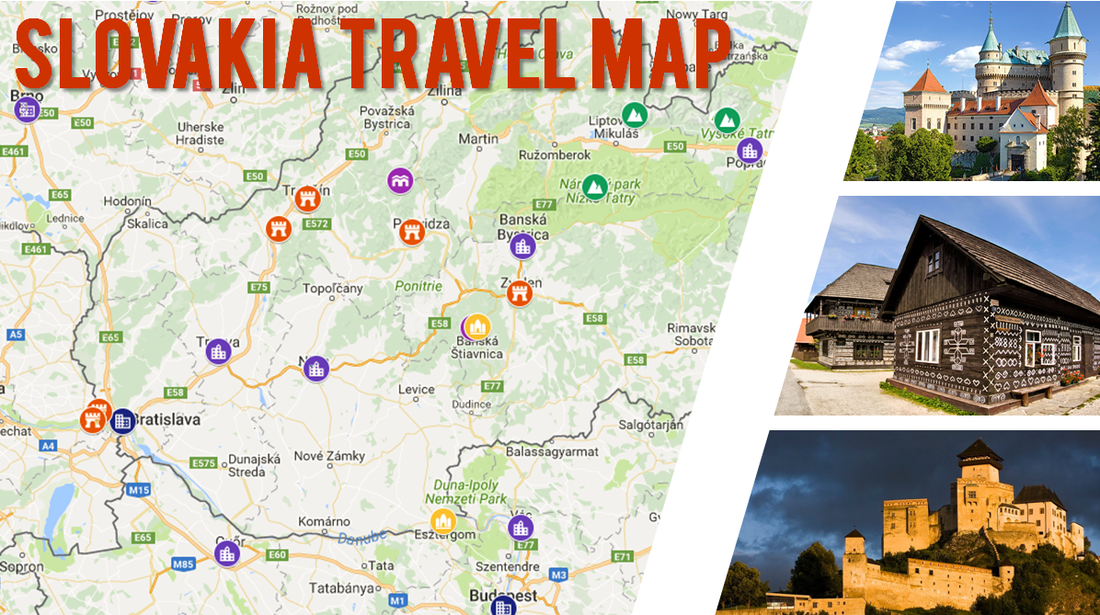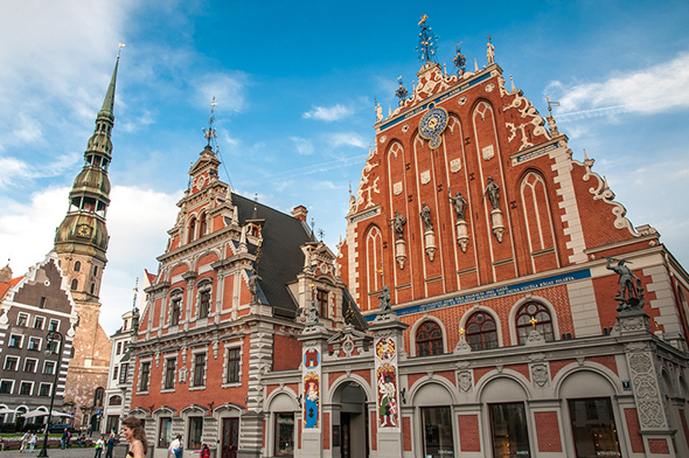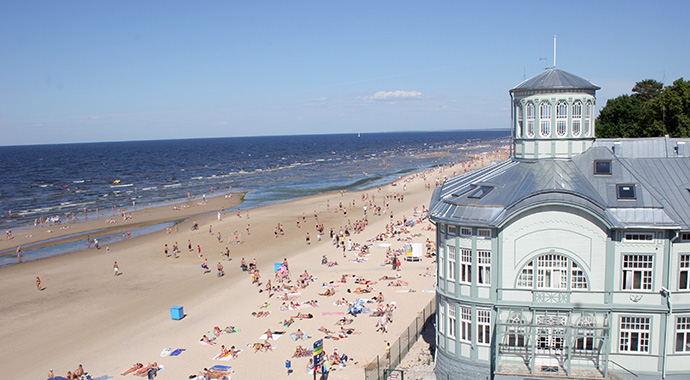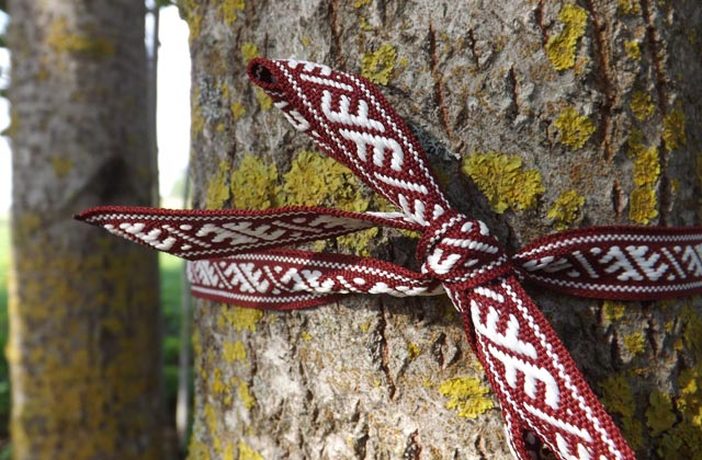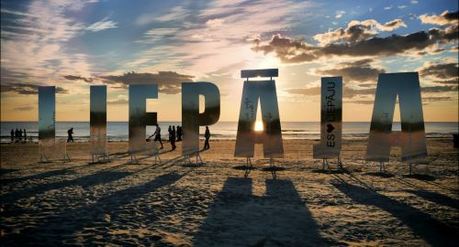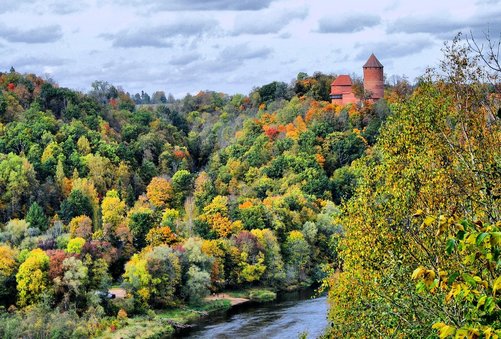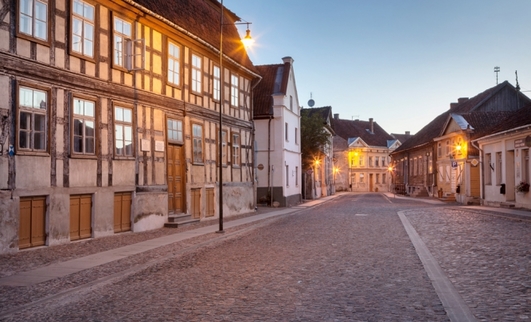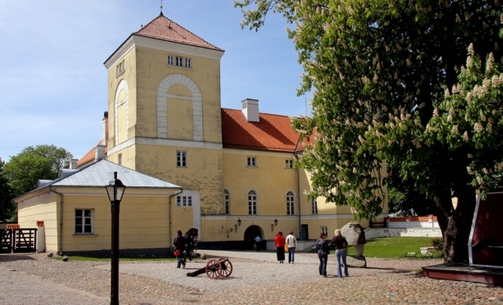|
I decided to put most places featured in NomadWill.com in this map, around 90% of them are covered by an article, either a guide or a tour! Check it out! Althought I'm not a local and it has been more than one year since I left Slovakia, I still remember most places, specially those I wrote about, now you can check all of them just taking few minutes to browse! The map has multiple switchable layers, and offers custom pictures and information about 90% of places! Of course, there is a lot that is not included, I just put in the map the places I visited during the Erasmus year, which tend to be the "most beautiful/easiest to reach" ones. The map features:
This time, the guide is about biggest city of Baltics and Latvia’s’ beautiful capital, Rīga! Mixing medieval remains with Art-Nouveau makes it a unique destination for a city break, since there is not a similar city on earth. The city is indeed pretty big, with more than 1 million citizens but covering a wide extension, since is near the sea. Although Riga was away from the mainstream tourism during great parts of XX century, due to Soviet occupation, now it is recovering its fame as the Baltic Pearl (or the Prague in the North as some travellers call it). Obviously, the most touristic part is the Old Town, where the medieval setting of the city (ancient churches, castles, narrow streets) mixes with the Hansa League style (big waterfronts on the river) and the more modern Art-Nouveau. 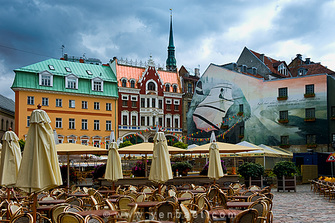 About the Old Town there is little to say, since most tourist guides will cover it better than here, just make sure not to miss any specially beautiful narrow street or an interesting museum, the best guide for that is inyourpocket. If you like modern history, Occupation museum and Barricades exposition are a must, if you want to learn about the Latvian struggle for independence. Also there are some weird museums like a Sun museum. If you want the best picture of the Old Town you need to cross the main bridge and get down not in the very other side of the city but in the man-made concrete shore, since it is some kind of park with sculptures and the I<3Riga sign. But this guide does not focus just on mainstream stuff that’s why now I will tell you about other gems of this city, while not really hidden or far, most tourist doesn't visit. 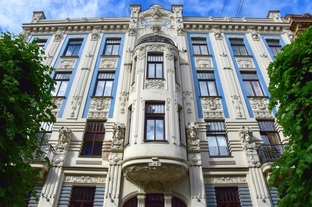 Although Art-Nouveau is present in most parts of the city centre (not just the Old Town) it reaches it maximum expression on Alberta Street (Alberta Iela) and its surroundings. It's just 10-15 minutes by walk from the Old Town and in the way you can check the beautiful Bastejkalna park (Bastion Hill), (where there are presents from several countries to Latvia as well as a real fragment of Berlin Wall) and the embassy street. Once in Alberta Street you should definitely go to Art-Nouveau museum, where you will be teleported to a real home of those times and see one of the most beautiful staircases of Europe. In the way back, check some nearby streets since they follow same style. 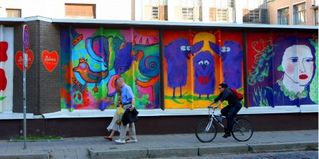 But what if I tell you that Rīga host 2014's most hipsterish district? You read right, not far from centre there is Miera street, a non-touristic place where the average business is hairdresser shops where you can try different cupcakes and organic coffees. To reach it, you will need to walk for 15 min from the Old Town, through Rīga centre where you can also see some beautiful buildings on the way. Miera street is unique due to several things, they say that it's the place where all Rīga citizens born and die (due to the fact that the main hospital is nearby as well as the city graveyard), also it is due to the very old architecture of its buildings, combining pre-WW2 red brick blocks and wooden houses, and finally, is where Latvia most famous chocolate maker has its main factory, which you can also visit as a museum or enjoy yourself in the cafe-shop.  In the end of the street there is a crossroads and not far from it there is a small shopping centre near an abandon factory, that’s where you should head because there is a nice surprise waiting for you there: You can find heaven for beer lovers... By double time! First you have Valmiermuiza shop and bar, one of Latvia's most famous beer brands, selling all their wide range of products for a great price and on the back side of the building, facing the abandoned factory there is Labietis, Latvia's most famous craft beer place with an amazing alternative vibe. Do you need some time out of the city in contact with nature? Don't worry! Rīga has the PERFECT place for you! 30 minutes by bus (you can take it in front of the opera, in the border of the Old Town) there is the Open Air museum! Which by that name doesn't sound very convincing, but let me explain, an Open Air Museum is a place where traditional national architecture, folklore, clothes and nature are kept intact and there is an extra fact: It's one of Europe oldest surviving open air museum, surviving both Nazi and Soviet bombings! Instead of explaining you why you should go, I will show some pictures. Also entrance is really cheap and there is a restaurant inside, so you can spend long time there. And finally there is a nice surprise for beach lovers: Rīga has northern Europe most famous beach!!! Jūrmala! Reachable in 30 minutes by train makes it a perfect plan for half a day. Jūrmala itself is a rich town for rich Russian tourist, everything is very modern and well-kept as well as luxurious, but the main promenade is full of average tourist so it's great. The beach itself is amazing, of course featuring a Blue Flag. In a hot sunny day you can enjoy this wide white sand beauty not worrying too much about people (since it's huge doesn't get crowded) or the sea temperature (about 18 degree). Near Jūrmala there are similar towns which you can go walking with curious stuff like a tower in Dzintaru Mežaparks. If you don't fancy mainstream beaches, there is another nice one in the other side of Rīga, Vecāķi beach. I hope you liked the guide and got curious about Latvia! There are guides available for the rest of the country as well as Latvia's second biggest city, Daugavpils! Most pictures from http://www.latvia.travel/en
This post will be about other amazing cities and towns in Latvia, excluding the two major cities, Riga and Daugavpils, each of these places has its unique charm and you should visit all of them! Latvia is not so small country as it seems, it fact, it has a wide variety of areas, in this guide there are so different places, going from white sand beaches to breathtaking castles, read carefully to make the most of Latvia. Most of these places are easily reachable by public transport, specially by bus, from Riga central bus station there are buses to every corner of the country. LiepajaLet’s begin with the third biggest city of Latvia, Liepaja. It is located very close to Lithuania, and short distance from Klaipeda, Lithuania’s most famous coastal city, and Palanga (a sea resort town). The city has the nickname of the city where the wind is born, but also known as the musical city, since a lot of Latvia’s singers and popular folk themes come from there (there are many musical instrument statues in the city as well as the touristic route, marked with musical notes). 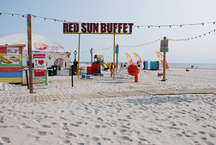 But what makes this city special? Well, it has an awesome beach, with a special “Californian” touch thanks to Red Sun Buffet bar (click for video-promo). The city itself has some really old buildings (special mention to the market and wooden houses), which are easily seen by following the musical touristic route stated before. Also in another part of the city you can see Zarist architecture at its best. But this city has a secret too, there is a district called Karosta, where one of the biggest Soviet Naval bases used to be, right now it looks a little bit abandoned and creepy, but it has very cool attractions, especially the Karosta Prison Museum (about which I wrote an article here). Also pay attention to Spriditis, a Latvian folk hero who appears represented all over the city. Hotels in the city have quite nice prices, I always go to Europa City Amrita hotel, a 4* hotel almost in the center for double rooms as cheap as 33€ per night. SiguldaEasily reachable from Riga, takes about one hour or less and can be a great day plan. More than the town, what is worthy about this place is the Gauja National Park, which actually has one of the few hills (and elevation) in this flat country, but they are all covered by a thick forest, where you can easily walk thanks to a beautiful wooden path. In the park there are caves with old school grafittis, and a cozy telepheric (where you can bungee jump), a bobsleigh track and Turaida castle (the one in the picture), which magnificently stands among the forest with its stunning red brick walls and towers. Definitely worth a visit if you spend even a weekend in Riga. You can find a lot of more information in this website Kuldiga This peaceful small town is in the middle of Latvian western part, and is loved by all Latvians due to the traditions and calm of the place. In fact, it can be a great place to spend the weekend due to the fact that even if a quiet place, has a lot of touristic sights and eco-tourism plans (bike trails, animal observation…). Maybe the most international sight is the… WIDEST WATERFALL IN EUROPE!! Which you can actually jump, but it is pretty wide after all. Among the town center, there are a lot of very cozy and old buildings, and especially beautiful wooden doors. Close to the town and reachable after about one-hour walking (or 7 minutes by car) there is a pretty unique attraction, the sand caves, which are a very large man-made complex of underground galleries, but the visit itself is pretty cool since they give you candles and a guide for not getting lost (really, you don’t want to get lost there). And finally, speaking about some funny tradition, there is a day when the males of the town need to cross the red brick bridge completely naked. VentspilsNow, if you think that you saw differences between cities in Latvia, wait until you read about Ventspils, the crazy town of the country. Why so? Maybe because it’s oligarch, major, benefactor (however you want to describe him) decided to focus his efforts toward making Ventspils the most alternative town of Europe, btw, here you can see a video of the major doing “normal” things (min 1:00) so then you can understand what kind of person is behind all this :D 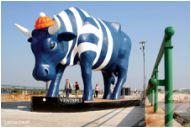 Ok, but why it is so different? Where to start… first thing you will see once you arrive to the city is a cow… (but what’s the fuss about a cow?) well, a sculpture of a cow with some weird costume or painting, but it won’t be alone, since there are tons of cow sculptures of all sizes and positions in the city (yes, it’s weird), but the fun doesn’t stop there… if you do special task like having a photo with all of them or other similar things you can earn a lot of money!! Well… Ventspils currency, the Venti, which you can physically withdraw in the tourism office (Vent Bank) and have great discounts in many museums and restaurants (yes, they worth it, it is not just propaganda stunt). The city has also a nice beach, with a very cool promenade to the lighthouse (where guess what, there is a huge sailor cow). As extra tip I recommend to eat in Guesthouse Kupfermans, in the old town, amazing well cooked dishes affordable for everybody!! I hope you liked this article and that now you are more eager to explore Latvia beyond its capital, Riga.
There are many more attractions in the country! Check the main website of Latvia tourism to know more information! Most of the pictures have been taken from the previous website |
Cheap GuidesIn this section you will find all you need to become a little expert in the guide place, without expending a lot! Guides
All
|

